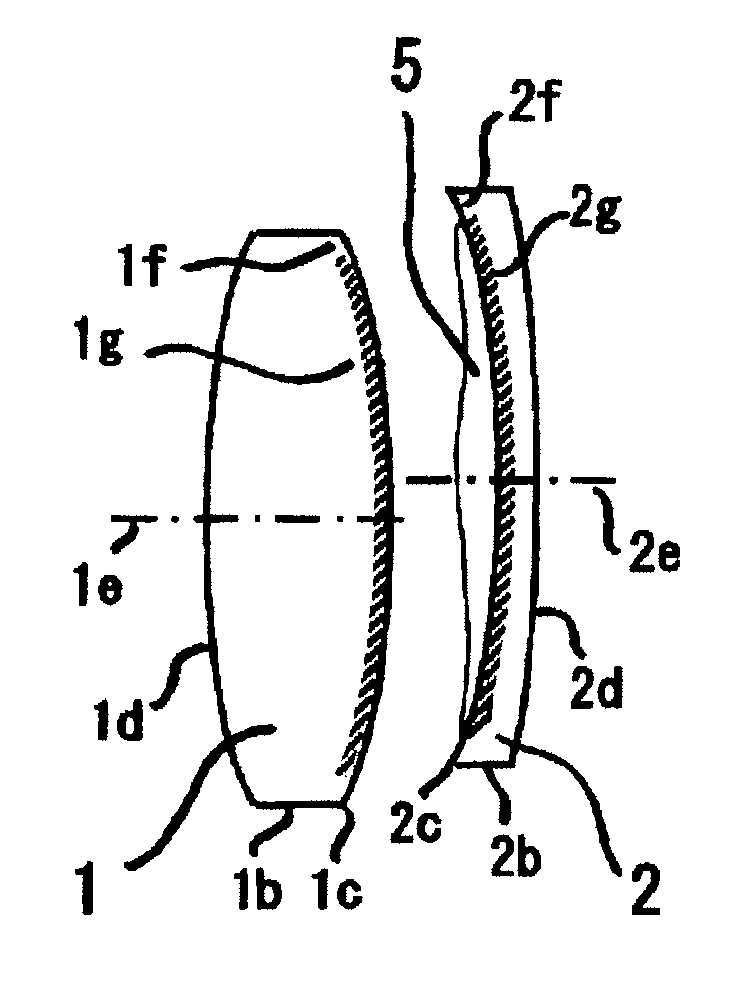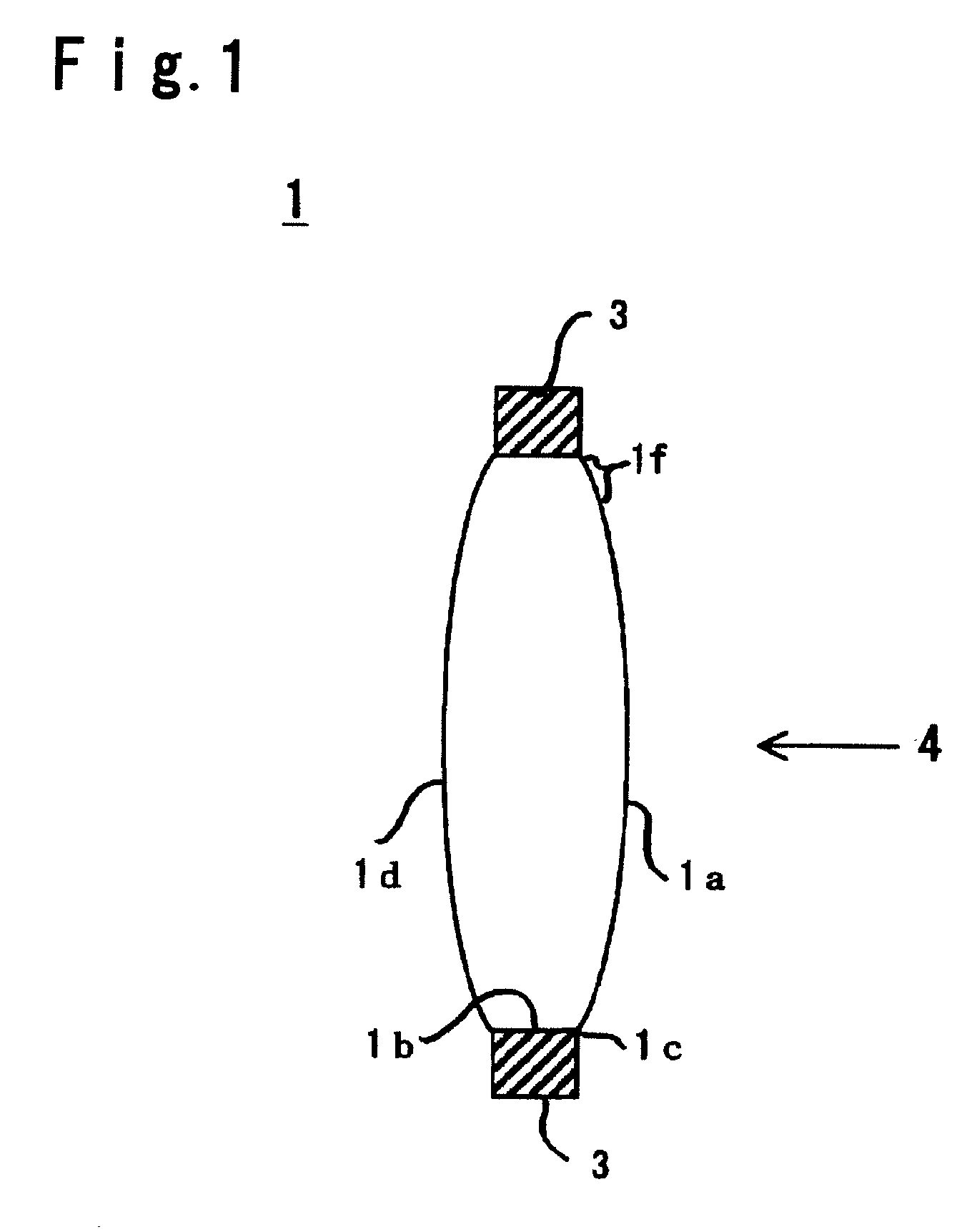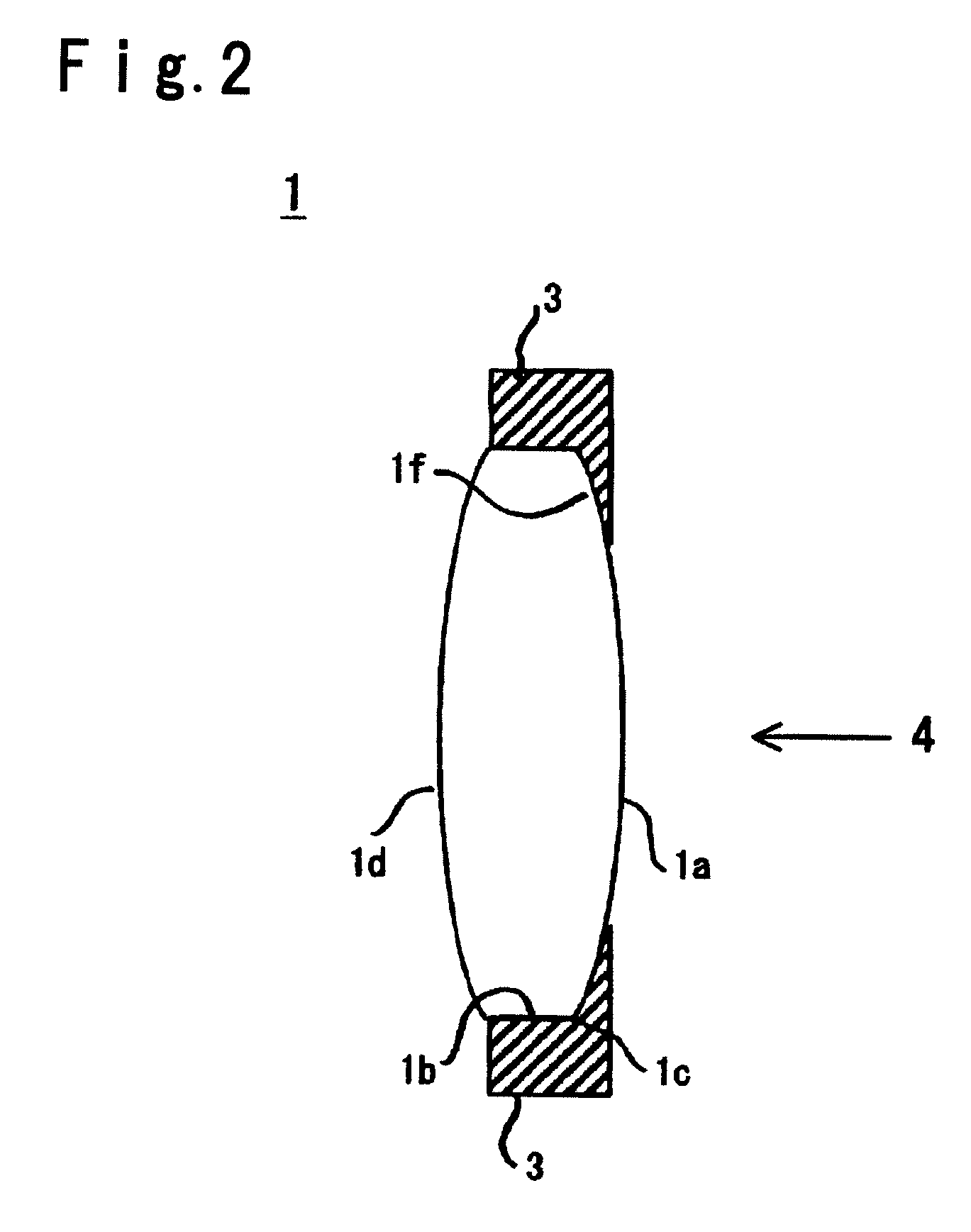Method for producing an optical element
a technology of optical elements and optical elements, applied in the field of optical element production, can solve the problems of insufficient optical performance of optical elements, additional problems in terms of highly skilled work, and substantial difficulty in final alignment, and achieve the effects of sufficient bonding strength, sufficient optical performance, and preventing separation at bonded portions
- Summary
- Abstract
- Description
- Claims
- Application Information
AI Technical Summary
Benefits of technology
Problems solved by technology
Method used
Image
Examples
example
[0076] In an example of the present invention, a cemented glass lens, which had an outer diameter of 10 mm and a total thickness of 5 mm, was produced so as to be capable of eliminating chromatic aberration with respect to different wavelengths. The cemented glass lens was configured so that the concave lens 2 was made of flint glass SF2, the convex lens 1 was made of crown glass BK7, and an acrylic, ultraviolet-curable adhesive was used as the liquid adhesive 5. The convex lens 1 and the concave lens 2 both had an outer diameter of 10 mm.
[0077] As the pretreatment for dry cleaning, a nitrogen gas was blown to the convex lens 1 and the concave lens 2 as the cemented lens parts to remove dust and dirt on the bonded surfaces. Then, the convex lens and the concave lens were subjected to ultrasonic cleaning, being immersed in 1) a cleaning liquid comprising a mild detergent, 2) a cleaning liquid comprising pure water, 3) a cleaning liquid comprising isopropyl alcohol, and 4) a cleaning...
PUM
| Property | Measurement | Unit |
|---|---|---|
| speed | aaaaa | aaaaa |
| total thickness | aaaaa | aaaaa |
| outer diameter | aaaaa | aaaaa |
Abstract
Description
Claims
Application Information
 Login to View More
Login to View More - R&D
- Intellectual Property
- Life Sciences
- Materials
- Tech Scout
- Unparalleled Data Quality
- Higher Quality Content
- 60% Fewer Hallucinations
Browse by: Latest US Patents, China's latest patents, Technical Efficacy Thesaurus, Application Domain, Technology Topic, Popular Technical Reports.
© 2025 PatSnap. All rights reserved.Legal|Privacy policy|Modern Slavery Act Transparency Statement|Sitemap|About US| Contact US: help@patsnap.com



